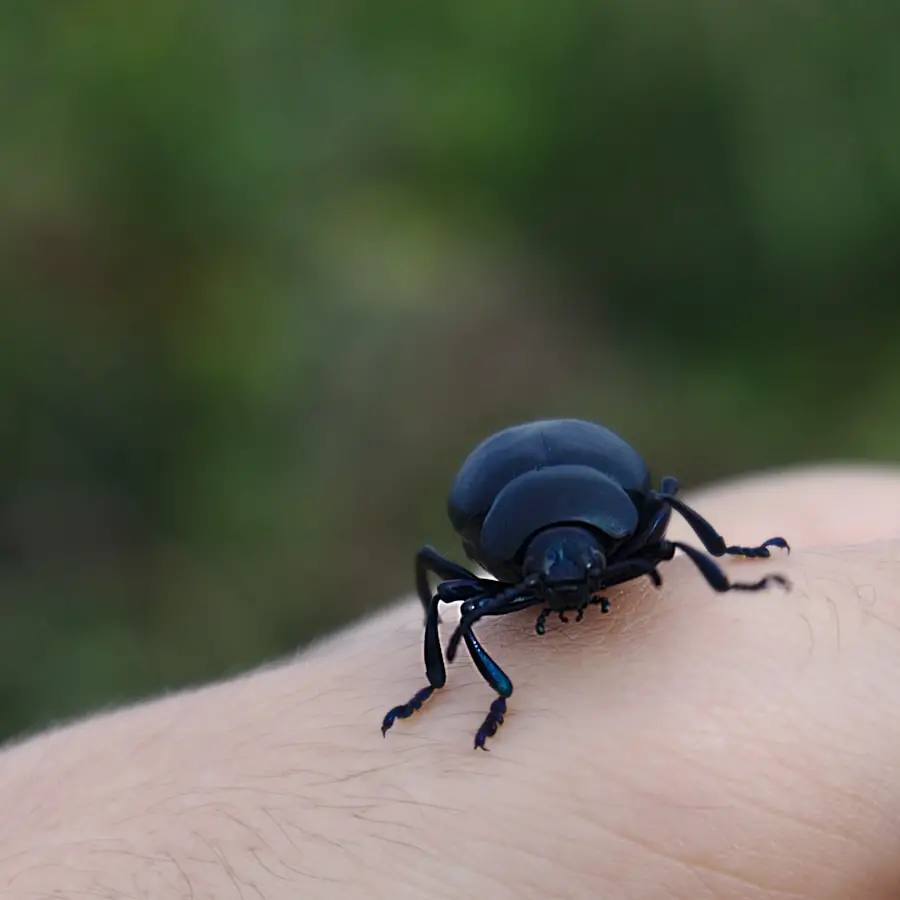Ticks are small arachnids that can pose significant health risks to humans and animals alike. These parasites are notorious for transmitting a variety of diseases, some of which can lead to severe health complications if left untreated. Lyme disease, perhaps the most well-known tick-borne illness, is caused by the bacterium Borrelia burgdorferi and can result in symptoms ranging from fatigue and fever to joint pain and neurological issues.
The Centers for Disease Control and Prevention (CDC) estimates that approximately 300,000 people in the United States are diagnosed with Lyme disease each year, highlighting the importance of understanding the risks associated with tick bites. In addition to Lyme disease, ticks can transmit other serious illnesses such as Rocky Mountain spotted fever, anaplasmosis, and babesiosis. Each of these diseases has its own set of symptoms and potential complications, making it crucial for outdoor enthusiasts to be aware of the dangers ticks present.
For instance, Rocky Mountain spotted fever can lead to severe complications like kidney failure or even death if not treated promptly. The risk of contracting these diseases is particularly high in certain geographic areas, especially during warmer months when ticks are most active. Understanding these risks is the first step in taking proactive measures to protect oneself from tick bites.
Key Takeaways
- Tick bites can lead to serious health risks, including Lyme disease and other infections.
- Wear long sleeves, pants, and closed-toe shoes when hiking to minimize skin exposure to ticks.
- Avoid tall grass, brush, and wooded areas where ticks are commonly found.
- Use insect repellent containing DEET and check your body for ticks after hiking.
- If you find a tick, use fine-tipped tweezers to remove it and clean the area with rubbing alcohol.
Dressing for Success: Proper Clothing and Gear for Tick Prevention
When venturing into tick-prone areas, the right clothing can serve as your first line of defense against these pests. Opting for long-sleeved shirts and long pants is essential; this not only minimizes skin exposure but also creates a barrier that makes it more difficult for ticks to latch onto your body. Light-colored clothing is particularly advantageous, as it allows for easier detection of ticks that may crawl onto your garments.
Additionally, wearing tightly woven fabrics can further reduce the likelihood of ticks penetrating through your clothing. Incorporating specific gear into your hiking outfit can enhance your protection against ticks. For instance, gaiters worn over your pants can prevent ticks from crawling up your legs, while a wide-brimmed hat can shield your head and neck from potential bites.
Furthermore, consider using clothing treated with permethrin, an insect repellent that binds to fabric and remains effective through multiple washes. This treatment can significantly reduce the chances of ticks attaching themselves to your clothing, providing an extra layer of security during your outdoor adventures.
Choosing the Right Trail: Avoiding Tick-Infested Areas

Selecting the right trail is a critical aspect of tick prevention that often goes overlooked. Ticks thrive in environments with high humidity and dense vegetation, such as wooded areas, tall grasses, and brushy landscapes. When planning a hike, it is advisable to research trails that are well-maintained and frequently used, as these areas are less likely to harbor ticks compared to overgrown or less-traveled paths.
Additionally, trails that are situated in open areas or those that have been recently cleared of underbrush can provide a safer hiking experience. Moreover, understanding the seasonal patterns of tick activity can help you make informed decisions about when to hike. Ticks are most active during the spring and summer months when temperatures rise and humidity levels increase.
However, certain species can remain active even in cooler temperatures, so it’s essential to remain vigilant year-round. By choosing trails that are less likely to be infested with ticks and avoiding areas known for high tick populations, you can significantly reduce your risk of encountering these pests during your outdoor excursions.
Preparing Your Skin: Tips for Using Insect Repellent and Tick-Proofing Your Body
| Topic | Metrics |
|---|---|
| Effectiveness of Insect Repellent | Studies show that insect repellents with 20-30% DEET provide the best protection against mosquitoes and ticks. |
| Duration of Protection | DEET-based repellents can provide protection for 4-8 hours, while picaridin-based repellents offer 6-8 hours of protection. |
| Tick-Proofing Your Body | Wearing long-sleeved shirts, long pants, and tucking pants into socks can help prevent ticks from reaching your skin. |
| Tick Check | Performing a thorough tick check after spending time outdoors can help remove ticks before they have a chance to transmit diseases. |
Insect repellent plays a vital role in tick prevention, but not all repellents are created equal. When selecting a product, look for those containing DEET (N,N-diethyl-meta-toluamide), picaridin, or oil of lemon eucalyptus, as these ingredients have been proven effective against ticks. It is important to apply repellent generously on exposed skin and reapply it according to the manufacturer’s instructions, especially after sweating or swimming.
Pay particular attention to areas where ticks are likely to attach, such as behind the ears, underarms, and along the waistband. In addition to using insect repellent on your skin, consider treating your clothing with permethrin for added protection. This insecticide is effective against ticks and remains active even after several washes.
To maximize its effectiveness, follow the application instructions carefully and allow the treated clothing to dry completely before wearing it. Combining both topical repellents and treated clothing creates a comprehensive strategy for tick-proofing your body during outdoor activities.
Staying Vigilant: How to Check for Ticks During and After Your Hike
Regularly checking for ticks during and after your hike is crucial in preventing tick-borne illnesses. While on the trail, take breaks periodically to inspect your clothing and skin for any signs of ticks. Pay close attention to areas where ticks are more likely to hide, such as the scalp, behind the ears, underarms, and around the waistline.
If you find a tick on your clothing, carefully remove it using a lint roller or tape to avoid direct contact. After completing your hike, conduct a thorough tick check on yourself and any companions. It’s advisable to perform this check in a well-lit area or even in front of a mirror for better visibility.
For children or pets, ensure that you inspect their bodies carefully as well. Showering within two hours of returning home can help wash away any unattached ticks and provide an opportunity for a more detailed inspection of your skin. By staying vigilant throughout your outdoor activities and promptly checking for ticks afterward, you can significantly reduce the risk of bites and subsequent illnesses.
After the Hike: Proper Tick Removal and Post-Hike Precautions

If you discover a tick attached to your skin after a hike, it’s essential to remove it properly to minimize the risk of disease transmission. Use fine-tipped tweezers to grasp the tick as close to the skin’s surface as possible. Pull upward with steady pressure without twisting or jerking the tick; this helps ensure that the mouth-parts remain intact and do not break off in the skin.
After removal, clean the bite area thoroughly with soap and water or an antiseptic. Once you have removed the tick, it’s important to monitor the bite site for any signs of infection or unusual symptoms over the following weeks. If you experience fever, rash, or flu-like symptoms within 30 days of a tick bite, seek medical attention promptly.
Additionally, keeping a record of when and where you were bitten can be helpful information for healthcare providers should symptoms arise later on.
Protecting Your Pets: Tick Prevention for Furry Hiking Companions
Pets are also at risk for tick bites when accompanying their owners on hikes or outdoor adventures. Dogs and cats can carry ticks into the home, increasing the risk of bites for humans as well. To protect your furry companions, consult with a veterinarian about appropriate tick prevention methods tailored to their specific needs.
Many veterinarians recommend topical treatments or oral medications that repel or kill ticks before they have a chance to attach. In addition to preventive treatments, consider outfitting your pets with protective gear such as tick collars designed specifically for repelling these pests. Regular grooming sessions can also help identify any ticks that may have latched onto your pet’s fur before they have a chance to bite.
After returning from hikes, conduct thorough checks on your pets’ bodies—paying close attention to areas like their ears, paws, and underbelly—to ensure they remain tick-free.
Seeking Medical Attention: What to Do if You’ve Been Bitten by a Tick
If you find yourself bitten by a tick despite taking precautions, it’s crucial to know how to respond effectively. First and foremost, remove the tick as soon as possible using the proper technique outlined earlier. After removal, keep an eye on the bite site for any changes or symptoms that may develop over time.
If you notice any unusual signs such as redness around the bite area or flu-like symptoms like fever or fatigue within weeks of being bitten, it’s essential to consult a healthcare professional. In some cases, doctors may recommend preventive antibiotics if there is a high risk of Lyme disease transmission based on factors such as how long the tick was attached or its species. Early intervention is key in managing tick-borne illnesses effectively; therefore, being proactive about seeking medical attention can make all the difference in ensuring your health remains uncompromised after a tick bite.
If you’re planning a hiking trip and want to avoid ticks, check out this article on the best time to travel to Hawaii. It’s important to be aware of the seasonal changes in Hawaii to ensure you have a safe and enjoyable trip.
FAQs
What are ticks?
Ticks are small arachnids that feed on the blood of animals, including humans. They are known for transmitting diseases such as Lyme disease and Rocky Mountain spotted fever.
Where are ticks commonly found?
Ticks are commonly found in wooded and grassy areas, as well as in areas with dense vegetation. They can also be found in urban parks and gardens.
How can I avoid getting ticks while hiking?
To avoid getting ticks while hiking, you can take the following precautions:
– Wear long-sleeved shirts and long pants
– Tuck your pants into your socks or boots
– Use insect repellent that contains DEET
– Stay on the center of trails and avoid brushing up against vegetation
– Check yourself and your pets for ticks after hiking
What should I do if I find a tick on my body?
If you find a tick on your body, use fine-tipped tweezers to grasp the tick as close to the skin’s surface as possible. Pull upward with steady, even pressure. After removing the tick, clean the bite area and your hands with rubbing alcohol, an iodine scrub, or soap and water.
What are the symptoms of tick-borne diseases?
Symptoms of tick-borne diseases can include fever, chills, headache, fatigue, muscle aches, and a rash. If you experience any of these symptoms after being bitten by a tick, seek medical attention.
